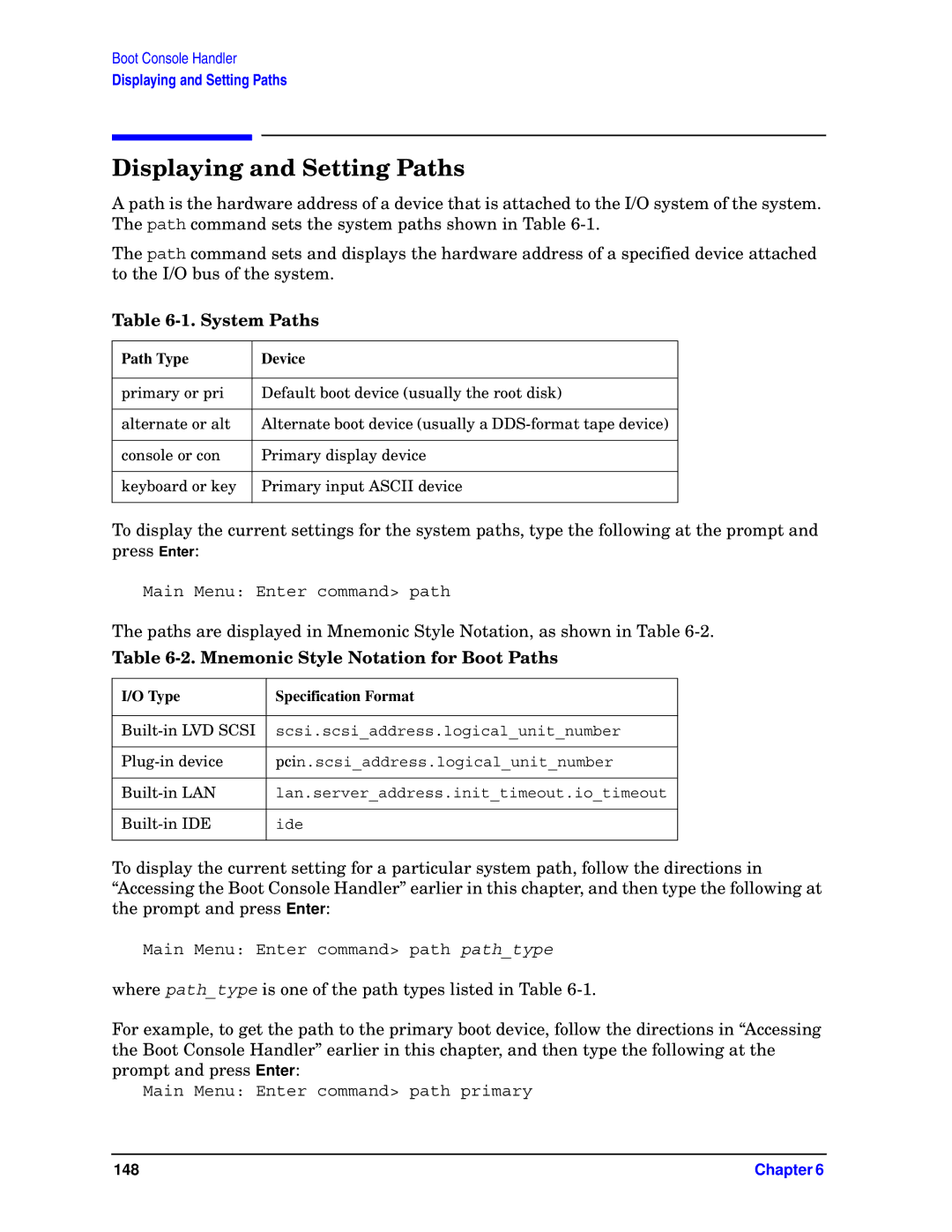
Boot Console Handler
Displaying and Setting Paths
Displaying and Setting Paths
A path is the hardware address of a device that is attached to the I/O system of the system. The path command sets the system paths shown in Table
The path command sets and displays the hardware address of a specified device attached to the I/O bus of the system.
Table 6-1. System Paths
Path Type | Device |
|
|
primary or pri | Default boot device (usually the root disk) |
|
|
alternate or alt | Alternate boot device (usually a |
|
|
console or con | Primary display device |
|
|
keyboard or key | Primary input ASCII device |
|
|
To display the current settings for the system paths, type the following at the prompt and press Enter:
Main Menu: Enter command> path
The paths are displayed in Mnemonic Style Notation, as shown in Table
Table 6-2. Mnemonic Style Notation for Boot Paths
I/O Type | Specification Format |
|
|
scsi.scsi_address.logical_unit_number | |
|
|
pcin.scsi_address.logical_unit_number | |
|
|
lan.server_address.init_timeout.io_timeout | |
|
|
ide | |
|
|
To display the current setting for a particular system path, follow the directions in
“Accessing the Boot Console Handler” earlier in this chapter, and then type the following at the prompt and press Enter:
Main Menu: Enter command> path path_type
where path_type is one of the path types listed in Table
For example, to get the path to the primary boot device, follow the directions in “Accessing the Boot Console Handler” earlier in this chapter, and then type the following at the prompt and press Enter:
Main Menu: Enter command> path primary
148 | Chapter 6 |
